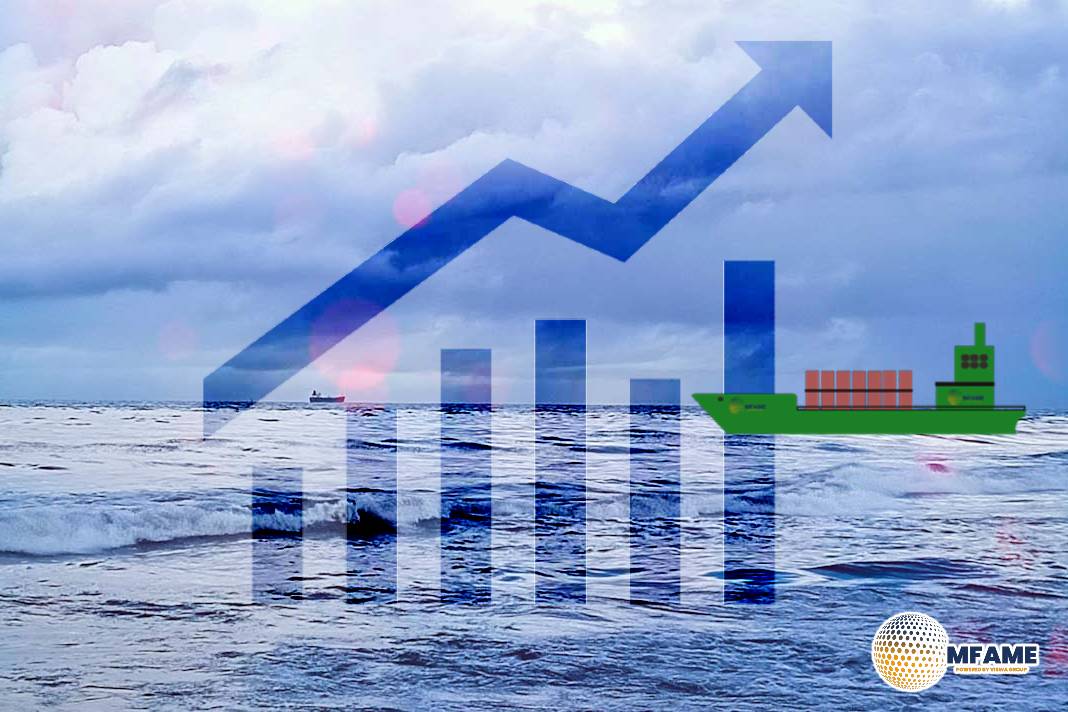One of the most significant and expensive aspects of relocating is shipping. Over the past 12 months, these costs have been steadily climbing. According to the weekly World Container Index by Drewry, a supply chain advisory company, the average price of shipping a 40-foot container has quadrupled compared to nine months ago, reports Crown World Mobility.
Shipping cost
Since April, the cost has surged from $2,706 to $5,901. Shipping a container from China to North Europe, one of the busiest trade lanes has seen a staggering 523% increase compared to last year. Similarly, the cost from China to the US west coast has increased by 320%, and from China to the US east coast by 246%.
These steep increases mean that relocating goods is now significantly more expensive than a year ago, though still cheaper than the peak during the pandemic when the cost reached $10,377 for a 40-foot container. Pre-pandemic, the average cost was $1,420.
However, for the first time since early May, the pace of these increases has slowed dramatically through July. This raises questions: Are rising costs finally slowing down, or is this a temporary lull before further escalation? What does this mean for relocations?
What’s Caused Prices to Skyrocket?
To understand the reasons behind these substantial price rises, we need to revisit the factors that have driven costs up over the past several months.
Houthi Attacks in the Red Sea
A significant contributor to the rising costs can be traced back to the situation in the Red Sea. When Houthi rebels began attacking commercial vessels late last year, shipping lines had to reroute vessels for safety reasons. This diversion away from the Suez Canal and the Red Sea, around southern Africa past the Cape of Good Hope, added 3,500 nautical miles and 10 extra days to the journey, significantly increasing shipping costs.
After initial disruptions, prices began to stabilize and even fell from a peak of $3,964 in January to $2,725 in early May. However, further port congestion, limited capacity on vessels, and increased demand due to a better-than-expected economic outlook in 2024 caused prices to climb dramatically again.
Record Demand and Shifting of the Peak Season
Xeneta reported a record demand for ocean freight shipping in May. The ongoing conflict in the Red Sea has led retailers to book slots for autumn well in advance, bringing forward the “peak season” traditionally from mid-August to mid-October.
Panama Problems and Baltimore Barricaded
Other issues, although less pronounced than the Red Sea disruptions, have also affected shipping schedules and costs. Drought in the Panama Canal reduced water levels, leading to operational restrictions. The Panama Canal Authority is developing a $1.6 billion reservoir to address these shortages. Additionally, a collision in March between a container ship and the Francis Scott Key Bridge blocked the shipping channel into the Port of Baltimore, which was only cleared in June.
Do Prices Look Like They Might Start to Come Down?
Unfortunately, it appears unlikely that prices will decrease shortly. Although Drewry’s July 11 World Container Index showed a modest 1% price rise, a stark contrast to previous weeks of double-digit growth, the peak season’s full impact has yet to be felt. Drewry anticipates that freight costs will remain high until the end of the peak season.
The key to resolving this situation lies in the resumption of ships using the Suez Canal, which is unlikely to happen soon. Another critical factor is increasing supply, including reducing port congestion and adding more capacity to ships. While there are signs of improvement in major hubs like Singapore, congestion remains an issue at other ports. Emily Stausbøll of Xeneta notes that while port congestion is easing and new ships are being delivered, it will take time to alleviate the pressure fully.
Did you subscribe to our daily Newsletter?
It’s Free! Click here to Subscribe
Source: Crown World Mobility

















